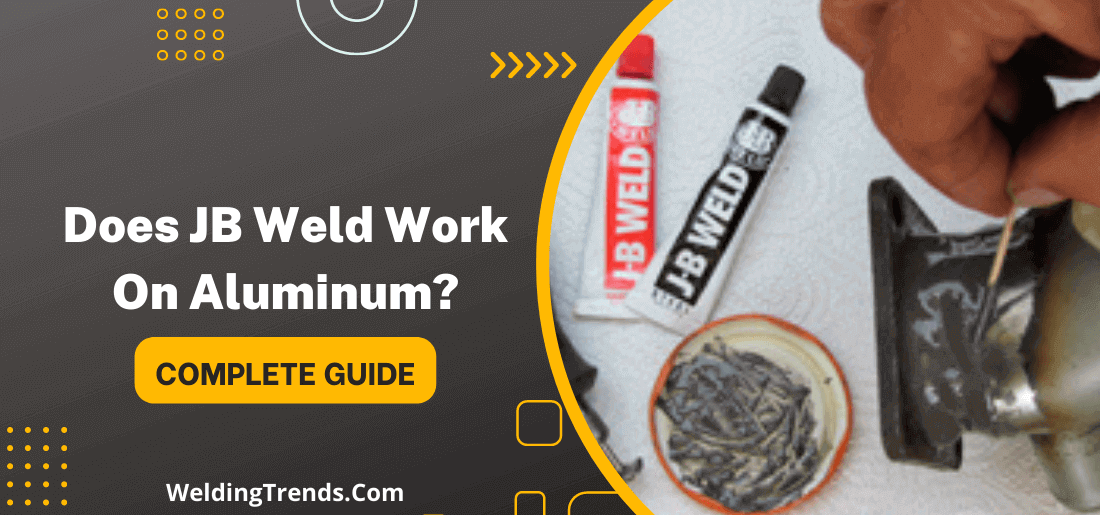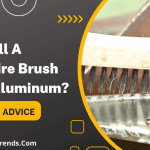Lots of people ask whether JB Weld works on aluminum. The quick answer is: yes, it does! JB Weld is a popular adhesive for bonding metals together because it forms a strong bond that can withstand high levels of stress.
Aluminum is a popular material for making boats, cars and other recreational vehicles because it is strong and lightweight.
JB Weld has been used to repair many aluminum items, including boats and aircraft. However, there are a few things you need to keep in mind when using JB Weld on aluminum.
Let’s take a closer look at how to use this adhesive effectively on aluminum surfaces.
Does JB weld work on aluminum?
JB Weld works on aluminum. It can be used to repair cracks or holes in aluminum surfaces. When used properly, it creates a strong bond that can withstand high temperatures and pressures.
JB Weld can be used on both clean and dirty aluminum surfaces. But for best results, the surface should be clean and free of grease before application. JB Weld can be used on both wet and dry aluminum surfaces.
JB Weld is not recommended for use on aluminum that will be exposed to temperatures above 300 degrees Fahrenheit. But it can be used on aluminum that will be exposed to temperatures below freezing.
How to use JB weld on aluminum?
- Clean and roughen the aluminum surface that you will be bonding. This will help the JB weld adhere to the aluminum.
- Mix equal parts of the JB weld resin and hardener.
- Apply the JB weld to the surface of the aluminum.
- Allow the JB weld to cure for at least 6 hours before handling or using the bonded area.
Follow these simple steps and you will be able to use JB weld on aluminum. This method is strong and durable, making it perfect for a variety of repair projects.
The benefits of using JB weld on aluminum
Following are the benefits of using JB weld on aluminum:
- JB weld is a very strong and durable adhesive that can hold up well to stress and wear.
- It can resist high temperatures, making it ideal for use in repairing aluminum components that are exposed to heat.
- JB weld can also tolerate extremely cold temperatures, making it an ideal choice for repairs in freezing or near-freezing conditions.
- The product is resistant to water, oil and other chemicals, so it will not break down or degrade over time when exposed to these substances.
- JB weld is easy to apply and can be used in a wide range of repair applications.
- It can be used to repair holes, cracks and other damage in aluminum components.
- JB weld can also be used to bond aluminum together, making it an ideal choice for creating custom aluminum parts or repairing damaged ones.
- The product is available in a variety of colors, so it can be matched to the color of the aluminum being repaired.
The drawbacks of using JB weld on aluminum
Yes, with the benefits, there are also some drawbacks when using JB weld on aluminum.
- JB weld is not as strong as some other adhesives on the market and it may not hold up as well to stress or wear over time.
- It is also not as flexible as some other adhesives, so it may not be able to bond together two pieces of aluminum that are slightly different in size or shape.
- The product is also not suitable for use with all types of aluminum, so it is important to check the compatibility of the adhesive with the aluminum before using it.
JB weld is a good choice for repairing aluminum components but it is important to keep in mind its limitations before using it.
Tips for using JB weld on aluminum properly
Follow these tips when using JB weld on aluminum for the best results:
- Make sure the surface is clean and free of any grease, oil, or dirt before beginning.
- Use coarse sandpaper to roughen up the surface of the aluminum before applying the JB weld. This will help the two surfaces bond together better.
- Apply the JB weld to one side of the joint, then use a brush or other tool to spread it out evenly.
- Press the two pieces of aluminum together firmly and hold for about 30 seconds to allow the JB weld to set.
- Let the joint dry for at least 24 hours before subjecting it to any stress or strain.
FAQs-Does JB weld work on aluminum?
Will J-B Weld react with aluminum?
Yes, J-B Weld can be used on aluminum. However, it is important to note that J-B Weld should not be used on aluminum that will be exposed to high temperatures. For best results, we recommend using J-B Weld on clean surfaces.
Additionally, it is always a good idea to test the product in a small, inconspicuous area before using it on your project.
What will J-B Weld not stick to?
In general, J-B Weld is not going to adhere well to either glass or plastic. This is because these materials are non-porous and have a very smooth surface. J-B Weld needs something to “grab onto” to cure properly. If you’re trying to bond these materials together, you’ll need to roughen up the surface first or use another adhesive.
Some other materials that J-B Weld may not work well with our Teflon, polypropylene and polyethylene. J-B Weld can sometimes bond to these materials, but it’s not going to be as strong of a connection as it would be with other surfaces.
How long does it take J-B Weld to dry on aluminum?
J-B Weld takes about 8 hours to dry on the aluminum. However, it is important to note that J-B Weld will only adhere to clean, dry surfaces. If the surface is not clean or dry, the drying time will be extended.
It is also important to note that J-B Weld should not be used on surfaces that are exposed to direct sunlight or heat, as this will also extend the drying time. For best results, apply J-B Weld in a well-ventilated area.
What can I use to patch aluminum?
There are a few different types of materials that can be used to patch aluminum, depending on the specific situation. For example, if you need to patch a small hole or crack, you can use epoxy resin. If you need to patch a larger area, you can use sheet metal or aluminum tape.
What is the best glue for aluminum?
There is no definitive answer to this question as the best glue for aluminum may vary depending on the specific project or application. However, some of the most popular types of glue used for aluminum include epoxy, acrylic and polyurethane.
Each of these options has its advantages and disadvantages, so it is important to choose the right type of glue for the specific project at hand.
How do you fix cracks in aluminum?
There are a few ways that you can fix cracks in aluminum.
- One way is to use an epoxy resin. This will fill in the crack and help to prevent it from spreading.
- Another way is to weld the aluminum together. This will create a strong bond that will hold the aluminum together and prevent the crack from spreading.
- Finally, you can use a patch. This will cover the crack and help to prevent it from spreading.
If you have a crack in your aluminum, you can try one of these three methods to fix it. Epoxy resin, welding, or patches can all help to prevent the crack from spreading and make your aluminum look new again.
Final Words:
JB Weld is a great option for repairing aluminum because it bonds well with the metal and forms a strong seal. It’s also easy to use, so you can fix your broken aluminum parts in no time.
If you’re looking for an adhesive that will permanently bond two pieces of aluminum together, JB weld is a good choice.
If you have any other questions about welding or repairs, don’t hesitate to contact professionals. They will be able to help you choose the best products and techniques for your project.




